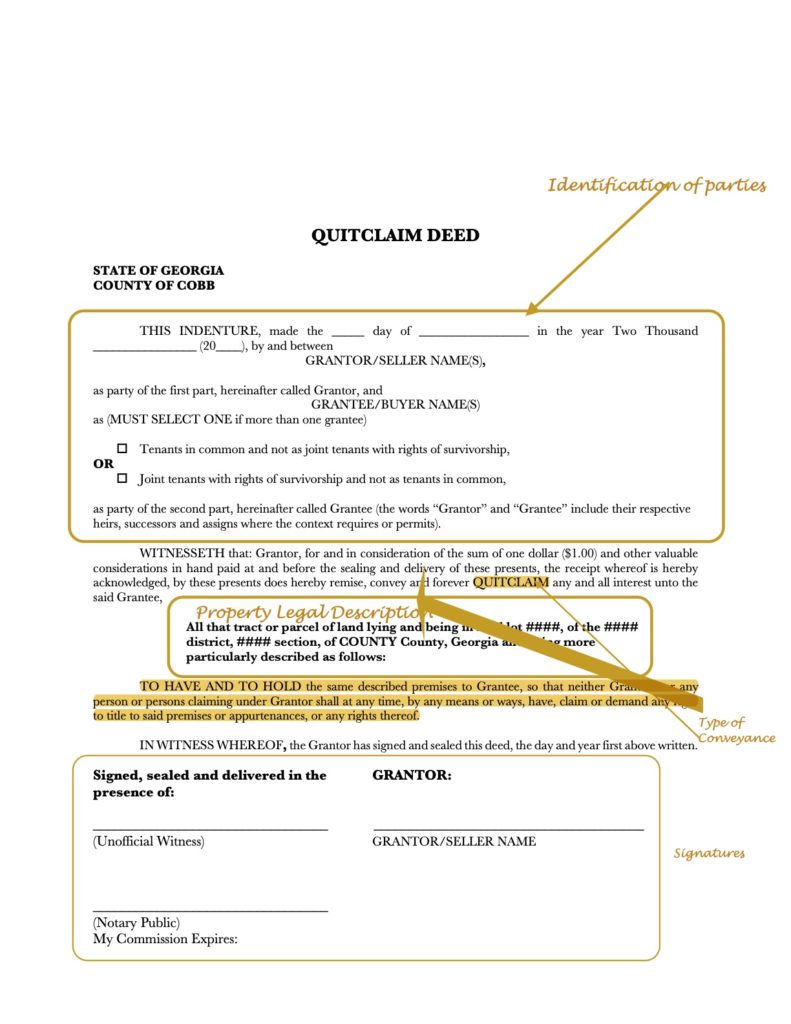The Basics of a Real Estate Deed
Deeds are used to record and publish interests in land. Real estate deeds convey property interests and are specific as to date, parties, and land described. A real estate deed is full of arcane legal jargon including words like seisin, indenture, warrant, etc. But, you can break a deed down into four simple parts:
- First paragraph identifying the parties
- Property description
- Type of conveyance
- Signature
Identifying the Parties
The first paragraph of a real estate deed identifies the date and the parties involved. There are two sets of parties to a deed, the Grantor and Grantee:
- The Grantor – or the “party of the first part” – is the giver of the property.
- The Grantee – or the “party of the second part” is the receiver of the property.
The grantors and grantees may be a person or persons or legal entities like corporations, LLCs, etc. The grantor gives the property interest to the grantee.
The Property Description
The next paragraph, the property description, identifies the property. This is called the “legal description,” and it details exactly what is being conveyed from the grantor to the grantee. The legal description will either:
- Describe the metes and bounds of a piece of property, or
- Reference a recorded plat of survey.
The legal description will also include the County and State of the property. The combination of the grantor’s name and the legal description help create a “chain of title” for the property. The legal description will often be identical to or a part of the legal description in the prior deed. The “prior deed” is the deed in which the grantor (giver) in the present deed was the grantee (receiver) previously.
The Type of Conveyance
The third section of a deed tells us about the kind of conveyance. The type of conveyance is most often one of the following:
- Warranty Deed
- Quitclaim Deed
Warranty deeds make a promise from grantor to grantee that grantor is conveying good “warranted” title to the property. The grantor makes the statement, “I promise that I own the property conveyed.” A quitclaim deed, conversely, makes no such promise from grantor to grantee. In a quitclaim deed, the grantor is saying “Whatever I may have, I give to you.”
The Signature
The final major component of a real estate deed is the signature provision. Deeds require formal execution to be valid. Two separate individuals must witness and notarize the grantor’s signature.
Finally, the Clerk’s Office of the Superior Court in which the property lies records the deed.
Read more about the topic of real estate here.

